- News
- Reviews
- Bikes
- Accessories
- Accessories - misc
- Computer mounts
- Bags
- Bar ends
- Bike bags & cases
- Bottle cages
- Bottles
- Cameras
- Car racks
- Child seats
- Computers
- Glasses
- GPS units
- Helmets
- Lights - front
- Lights - rear
- Lights - sets
- Locks
- Mirrors
- Mudguards
- Racks
- Pumps & CO2 inflators
- Puncture kits
- Reflectives
- Smart watches
- Stands and racks
- Trailers
- Clothing
- Components
- Bar tape & grips
- Bottom brackets
- Brake & gear cables
- Brake & STI levers
- Brake pads & spares
- Brakes
- Cassettes & freewheels
- Chains
- Chainsets & chainrings
- Derailleurs - front
- Derailleurs - rear
- Forks
- Gear levers & shifters
- Groupsets
- Handlebars & extensions
- Headsets
- Hubs
- Inner tubes
- Pedals
- Quick releases & skewers
- Saddles
- Seatposts
- Stems
- Wheels
- Tyres
- Health, fitness and nutrition
- Tools and workshop
- Miscellaneous
- Cross country mountain bikes
- Tubeless valves
- Buyers Guides
- Features
- Forum
- Recommends
- Podcast
TECH NEWS
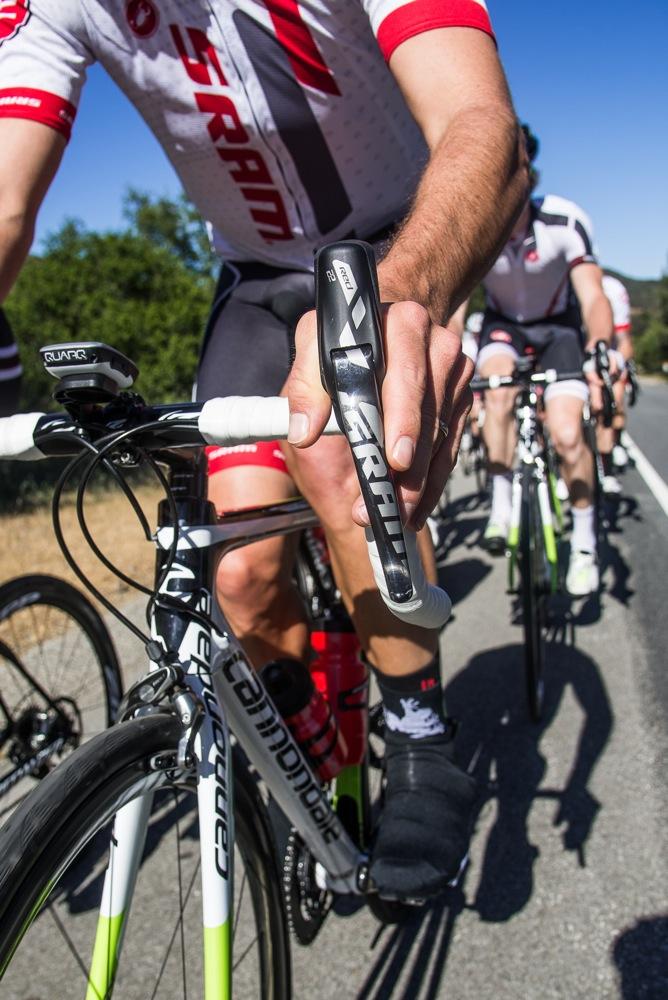 SRAM 22 Hydro lever action close up
SRAM 22 Hydro lever action close upFirst Ride: SRAM Red 22
SRAM are releasing two new groupsets, Red 22 and Force 22, and we were lucky enough to be at the launch in California last week, doing four rides on bikes equipped with the new Red components. Here are our initial thoughts.
We’ll start with the new brakes… There are two new hydraulic brake systems available which SRAM couple together under the Hydro R name. They say:
“SRAM, long a leader in hydraulic braking technology with our Avid brand, has reset the vision for road bike braking for the coming decade. This is a revolutionary jump in power, control, and modulation. Like nearly every other high-speed conveyance, SRAM brings hydraulic technology to road cycling for multiple applications. Disc or rim brake, SRAM will stop what you’ve propelled faster.
“We’re intent on providing options for braking and, simply put, our road hydraulic systems will provide better control and performance in all conditions.”
The two options are:
1 Hydraulic Road Disc (HRD) brake
To use this system you need to use a disc-specific frame and fork and disc-equipped wheels.
2 Hydraulic Road Rim (HRR) brake
These are single-bolt mounted and can be fitted in the place of standard mechanical rim brakes.
The HRD brakes provide an exceptional amount of power, allowing you to brake considerably harder and later than with mechanical rim brakes without any fear of losing control. They really do make a significant difference to the way that you can ride.
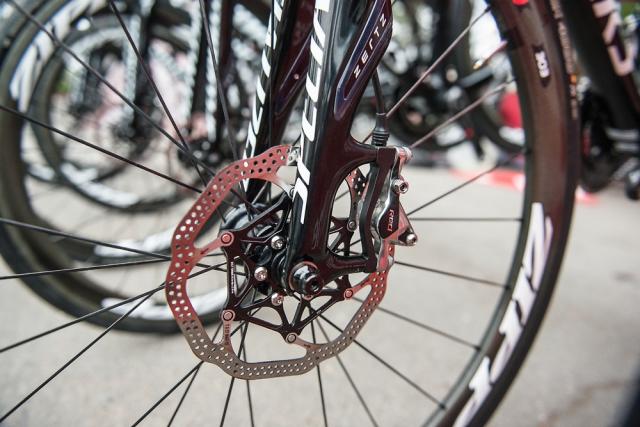
Riding fast descents, you soon learn what the brakes are capable of and find yourself leaving the deceleration until you’re almost into a bend, safe in the knowledge that a quick squeeze of the brake levers will take you down to the speed you’re after to get around.
You also find that your ‘just in case’ speed rises with these brakes. By that I mean that on every part of a descent you’ll have a speed where you feel safe – a point beyond which you won’t feel confident that your brakes will get you out of trouble. With these brakes, that speed is a touch higher than normal thanks to their greater capability.

If you’re worried that all that power will be a liability if you brake too hard, don’t be. You get loads of modulation here and the braking power is far more linear than you get on most carbon rims, for example. There’s no snatching at all.
The effort required to apply the brakes is amazingly low. One trigger finger is all you need in any situation, even if you want to haul yourself down from 50mph to a complete stop as quickly as possible.
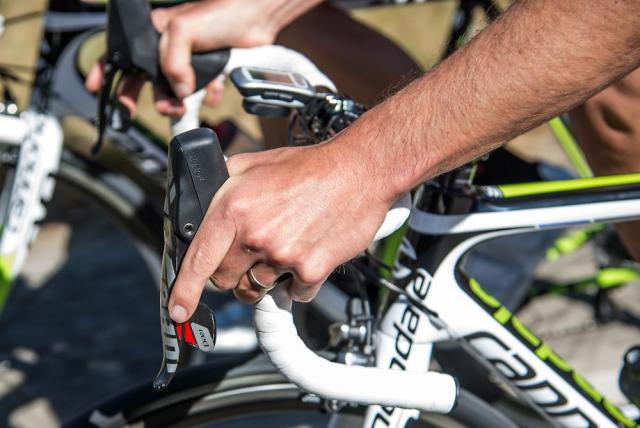
SRAM have made the front end of the Hydro R lever about 1cm taller than on their standard lever in order to accommodate the brake’s master cylinder. This gives you a larger handhold than before if you want to sit with your forearms parallel to the ground and hold the nose of the lever in your fist. I found myself doing this on fast sections of rides and just using my little finger to do the braking at the top of the lever – it really is that easy.
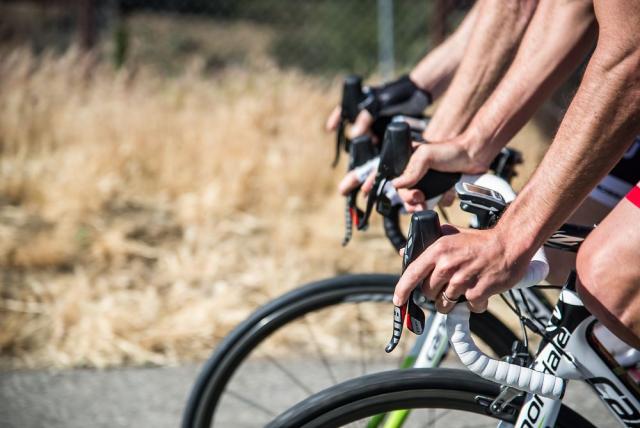
That extended nose aside, the Hydro R levers are ergonomically identical to the mechanical ones. The diameter of the lever body is the same, as is the reach to the levers – and that distance is adjustable on both the Hydro R and the mechanical versions.
Of course, one of the key benefits of disc brakes is their performance in wet conditions. Rim brake function can suffer badly on wet roads whereas SRAM claim that the HRD brakes are affected just 5-8%. The trouble is, it didn’t rain while we were in California – they don’t really do rain around Los Angeles – so we didn’t get the chance to check that out for ourselves.
I did find that my HRD brakes started to squeal a little towards the end of the longest descent that we rode, but that didn’t seem to be a problem across the board. No one else’s brakes joined in the singing so I’m inclined to think that was more to do with the setup than something intrinsic to the brakes themselves. I’ve just checked my Garmin and it was a six-mile descent – so not typical UK conditions.
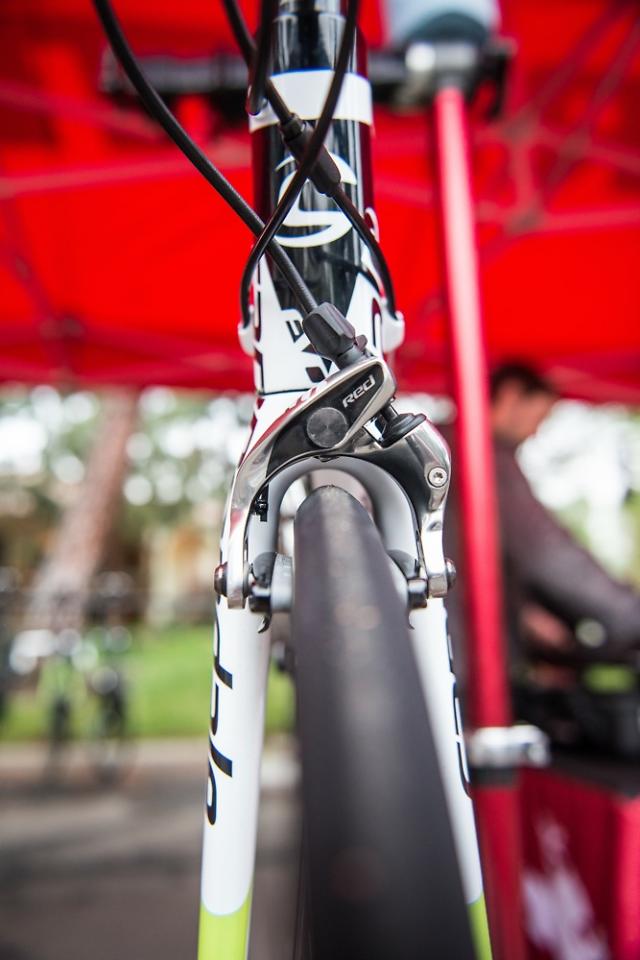
The simplest way to describe the HRR brakes – the hydraulic rim brakes – is that they’re similar but slightly less so. They’re considerably more powerful than SRAM’s cable-operated rim brakes but not as powerful as the HRD brakes.
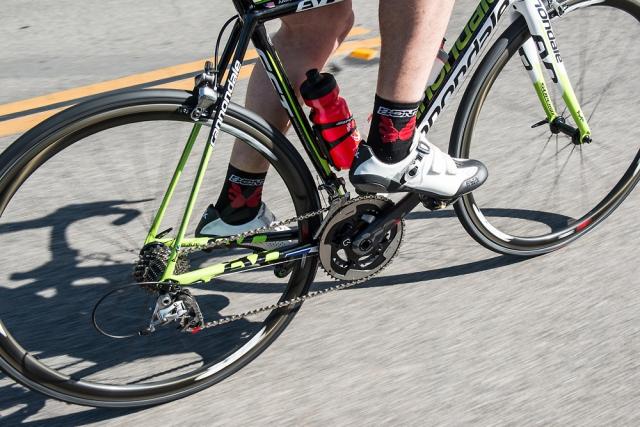
The HRR brakes are going to be more affected by wet conditions than the HRD brakes although, as I said, we didn’t get the chance to check that out because we had dry roads throughout our time on the press camp.
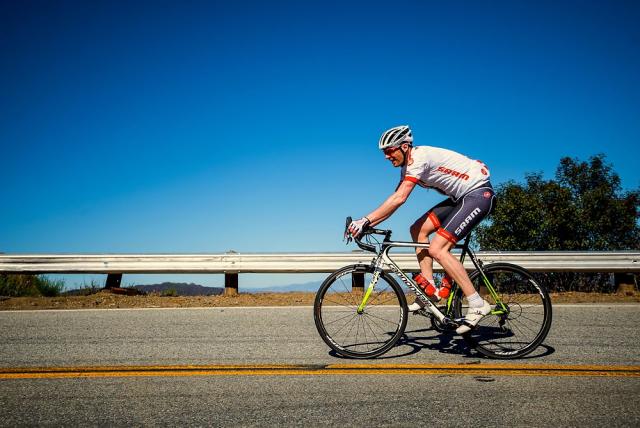
One of the key benefits of the HRR brakes is that they’ll fit on a standard road bike with standard wheels. They have a quick release for getting your wheel in and out, and you get a simple twisty adjuster that allows you to fine-tune the distance from the pads to the rim, so they’re very similar to cable-operated brakes but with an extra helping of power.
As for the rest of the Red 22 groupset, the major change is obviously the addition of that extra sprocket, taking you up to an 11-speed cassette. In order to do this, SRAM have had to redesign the chain and that has a knock-on effect right through the system. Both mechs, the chainset and the shifters have all been altered meaning that none of the Red 22 components are compatible with any of the existing 10-speed parts (although Red 22 and Force 22 components are interchangeable).
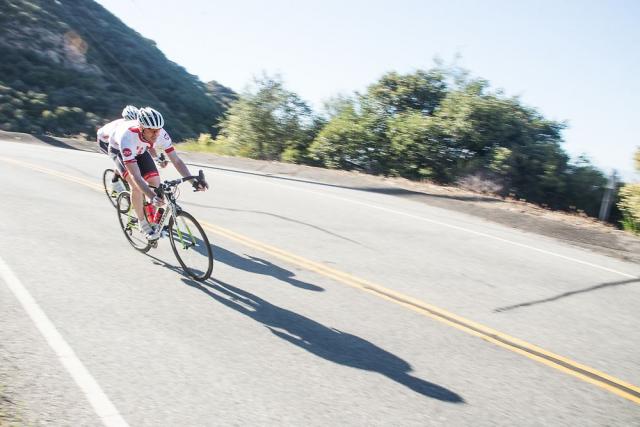
In practice, though, the only thing you’ll notice is that you have 22 front: rear combinations rather than 20. Of course, there is gear size overlap/duplication, but SRAM call this ‘True 22’ because you can cross chain with their system – you can run the chain on the larger chainring and the largest sprocket, and the smaller chainring and the smallest sprocket. They don’t encourage this but it can be done, whereas Shimano and Campagnolo tell you specifically not to do this.
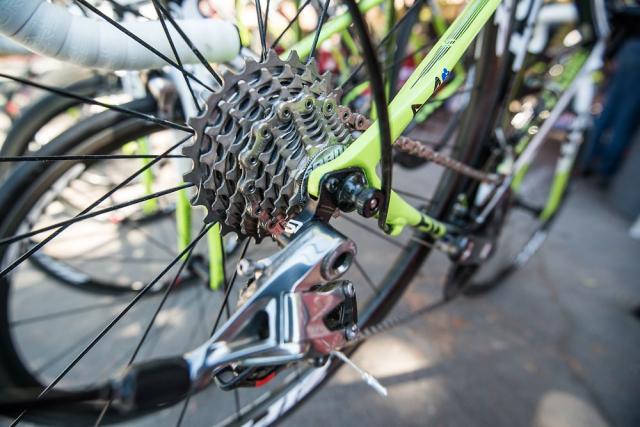
In most cases the extra sprocket is a 16-tooth one slap-bang in the middle of the cassette, so the sprocket sizes increase in size by one tooth at a time right up to 17T before the larger jumps begin.
In terms of shifting, Red 22 is as quick and accurate as existing Red both up and down the block, and moving between chainrings is just as simple. To me, it feels exactly the same as before, just with the addition of that extra sprocket.

Moving from a 10-speed system to an 11-speed setup is only ever going to be a marginal benefit; it’s the hydraulic braking that’s the game changer here. SRAM’s new options really do make a big difference and they have the potential to influence the way that you ride. We’ll be really interested to see what effect they have on the market over the coming months and years.
Mat has been in cycling media since 1996, on titles including BikeRadar, Total Bike, Total Mountain Bike, What Mountain Bike and Mountain Biking UK, and he has been editor of 220 Triathlon and Cycling Plus. Mat has been road.cc technical editor for over a decade, testing bikes, fettling the latest kit, and trying out the most up-to-the-minute clothing. He has won his category in Ironman UK 70.3 and finished on the podium in both marathons he has run. Mat is a Cambridge graduate who did a post-grad in magazine journalism, and he is a winner of the Cycling Media Award for Specialist Online Writer. Now over 50, he's riding road and gravel bikes most days for fun and fitness rather than training for competitions.
Latest Comments
- dh700 2 sec ago
Again, "I don't want to" and "I can't" are different from "It can't be done"....
- Rendel Harris 34 min 55 sec ago
Come on guys, appreciate all the entertainment you provide and discussion you provoke but really, two seconds just skimming your articles for...
- chrisonabike 2 hours 11 min ago
Councils don't seem terrible keen ... maybe eburtthebike can give us the insider view in why not?...
- Kronsteen 2 hours 21 min ago
Maybe, and its just a thought, a huge multinational oil company might have the resources to provide safety kit like that. Anyone know of one?
- Hirsute 5 hours 29 min ago
Another pathetic sentence for killing a cyclist....
- Surreyrider 5 hours 49 min ago
You sound like the PR for hookless wheels. ...
- HoarseMann 6 hours 47 min ago
...and maybe a third? Don't forget the M49 'ghost' junction: https://www.bristolpost.co.uk/news/bristol-news/work-m49-ghost-junction-...
- Rendel Harris 7 hours 24 min ago
You could argue that either way but it seems reasonable to call it two separate incidents, he was assaulted, went home, later went back to the...
- ubercurmudgeon 9 hours 12 min ago
What a shit world we've created.
Add new comment
8 comments
I certainly have some sympathy with your point of view, kevtufc. I'd really like to see some figures on the subject and a head to head test (we've not had the chance yet, obviously).
I've quite often argued around these parts that the limiting factor is often the tyre's grip on the road rather than slowing or stopping the wheel.
But, when using the brakes, I feel you can ride more aggressively in safety.
It's an interesting one. We'll have the brakes in for review later in the year and we'll have a better idea of how they stack up then. Bear in mind that a First Ride is just that: initial thoughts rather than a definitive review.
And did you do any wheel changes, and if so how long did it take? Just curious as to whether it's a faff with the disk setup.
I reckon the light touch with which you get a lot of stopping power is a major plus... I have to say I'd love this set up.
Funny you should ask that. Second question down...
http://road.cc/content/news/80972-why-sram-believe-hydraulic-brakes-are-...
Oh yeah!
So what they're saying is that because you have better control over the braking power you can brake harder because you can more accurately control how hard you can break without losing traction?
Seems a bit of a stretch to me. I'm not knocking hydraulics at all, I'm sure there's great reasons to use them, I just still don't buy that "extra braking power" is one of them...
I honestly don't get how more power than the rim brakes I already have is a plus. The maximum breaking force I can put on is not limited by the power of the brakes but other things, like traction on the road. I keep seeing reviews of hydraulic breaks raving about the extra braking power but I just don't get it.
Could somebody explain it to me?
For clarification: I'm talking about the rim brakes, ignoring any different advantages discs may bring.
if you're sat normally on your bike going down a hill, in dry conditions, you'd stuggle to apply enough braking force at the front wheel with a rim brake to catapult yourself over the bars
but i stuck a brolly in your spokes, that's where you'd end up. the bike wouldn't skid. it would simply stop.
the amount of traction available on the road is far, far higher than you think.
more power is not the be-all and end-all though, the major gain is being able to control a similar amount of braking power much more easily. less fatigue, more confidence in the brake's ability to stop you.
people have been saying 'my brakes are fine as they are' since as long as i can remember. that hasn't stopped them getting better, though. along with everything else that was 'fine as it was', like down tube shifters and wooden rims
Any statement as to whether the rim and disk levers are the same? Just thinking that maybe one could install a 22 gruppo on an existing frame with rim brakes then some time in the future upgrade to a disk frame and only need to buy new hose, calipers, wheels and disks rather than also needing to buy new shift/brake levers. Just a thought.